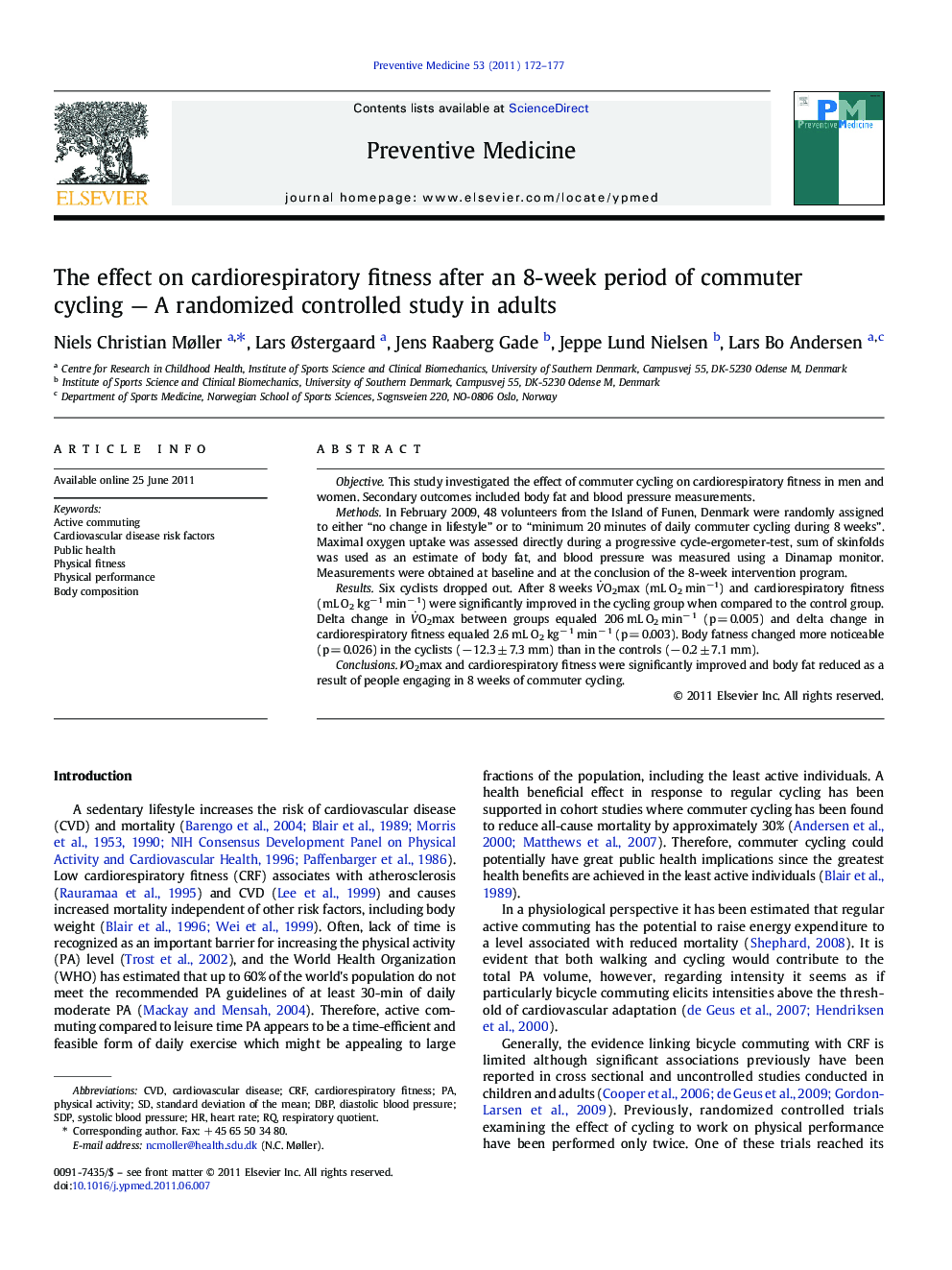| کد مقاله | کد نشریه | سال انتشار | مقاله انگلیسی | نسخه تمام متن |
|---|---|---|---|---|
| 3100739 | 1191218 | 2011 | 6 صفحه PDF | دانلود رایگان |

ObjectiveThis study investigated the effect of commuter cycling on cardiorespiratory fitness in men and women. Secondary outcomes included body fat and blood pressure measurements.MethodsIn February 2009, 48 volunteers from the Island of Funen, Denmark were randomly assigned to either “no change in lifestyle” or to “minimum 20 minutes of daily commuter cycling during 8 weeks”. Maximal oxygen uptake was assessed directly during a progressive cycle-ergometer-test, sum of skinfolds was used as an estimate of body fat, and blood pressure was measured using a Dinamap monitor. Measurements were obtained at baseline and at the conclusion of the 8-week intervention program.ResultsSix cyclists dropped out. After 8 weeks V˙O2max (mL O2 min−1) and cardiorespiratory fitness (mL O2 kg−1 min− 1) were significantly improved in the cycling group when compared to the control group. Delta change in V˙O2max between groups equaled 206 mL O2 min− 1 (p = 0.005) and delta change in cardiorespiratory fitness equaled 2.6 mL O2 kg− 1 min− 1 (p = 0.003). Body fatness changed more noticeable (p = 0.026) in the cyclists (− 12.3 ± 7.3 mm) than in the controls (− 0.2 ± 7.1 mm).ConclusionsV˙O2max and cardiorespiratory fitness were significantly improved and body fat reduced as a result of people engaging in 8 weeks of commuter cycling.
► 8-week commuter cycling.
► Improved V˙O2max.
► Improved fitness.
► Reduced body fat
Journal: Preventive Medicine - Volume 53, Issue 3, 1 September 2011, Pages 172–177